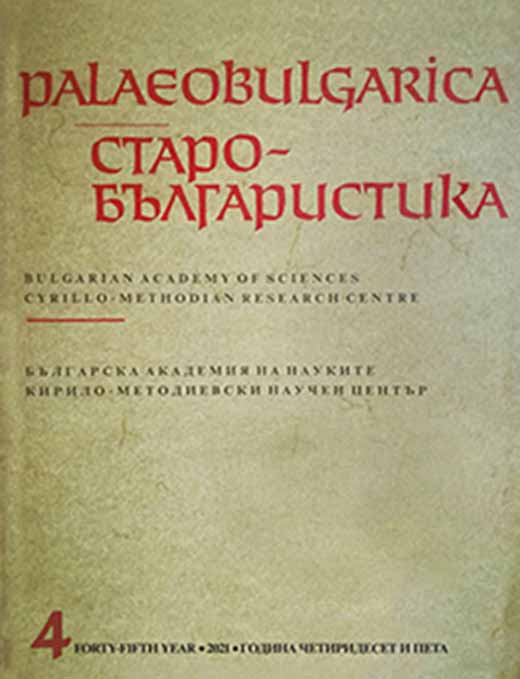За „Сърбизмите“ в Мариинското евангелие
The “Serbian” Features in the Codex Marianus
Author(s): Anna-Maria TotomanovaSubject(s): Language studies, Language and Literature Studies
Published by: Кирило-Методиевски научен център при Българска академия на науките
Keywords: Codex Marianus; Serbian features; Historical Phonetics; Bulgarian dialects.
Summary/Abstract: The questions about the provenance of Codex Marianus – Bulgarian or Serbian – were raised back in 1883, when its first and so far, only editor Vatroslav Jagić suggested that the mutual change of the letters for the back nasal vowel ǫ and labial back vowel u should be regarded as a purely Serbian feature and therefore the copyist must have been born in the lands of Serbs and Croats or more precisely somewhere south to them in Bosnia. For over 140 years the dispute about the “Serbian” features in Codex Marianus has never ceased and a lot of ‘pro’ and ‘contra’ arguments about Jagić’s hypothesis have been adduced. Their common flaw is the fact that they do not take into account the achievements of the modern diachronic and areal linguistics and compare the linguistic situation of the 10–11th cc., as it is preserved in the Codex, with the cotemporaneous Serbian and Bulgarian dialects, known to the research community from the 19th c. The presence of o instead of ъ in both the word root and the affixes in a manuscript dated to the 10th–11th cc. links the Codex Marianus to such Old Bulgarian manuscripts as the Psalterium Sinaiticum and Codex Assemanius, showing at the same time a clear connection to the south-western Bulgarian dialects. Like all classical Bulgarian manuscripts, the Codex Marianus is a copy of an older original and the variations in the use of ǫ and u reflect an early stage of the development of these phonemes as diphthongoids, respectively ʌŋ > uŋ и ʌw > uw. Their confusion is caused by the mixing of the two glides depending on the phonetic environment: in labial environment the nasal glide tends to become labial and vice versa – in nasal and/or dental environment the labial glide could be nasalized. In Codex Marianus there is a total of 99 cases of incorrect use of u and ǫ signs. The 73 cases of replacement of u by ǫ definitely outnumber the 26 examples with replacement of ǫ by u. Statistically the deviations from the correct use of ǫ represent only 1,14%, and the incorrect use of the u-signs represents just 0,5%. The detailed analysis of all examples shows the following: Within the word: ǫ stays at its etymological place and instead of u before j, palatal consonants š, ž, r and before labial (vowel or consonant); u stays at its etymological place and instead of ǫ before occlusive consonants, j, palatal ž, labial consonant m. In the wordend: ǫ stays at its etymological place and instead of u more often before a vowel, palatal or dental consonant, and the beginning of the next word might also influence the process; u stays at its etymological place (there are only 7 examples with u instead of ǫ) and the position before pause seems to favor the u-voicing. The behavior of the two vowels within the word coincides almost thoroughly with the situation in the Menaion of Novgorod (an 11th c. Russian copy of an Old Bulgarian original), described by V. Kolesov. The wordend however shows a totally different situation, in which the tendency to replace the labial vowel with nasal definitely prevails. And this is typical of languages such as Bulgarian and Polish that have preserved the nasalism over the next centuries.
Journal: PALAEOBULGARICA / СТАРОБЪЛГАРИСТИКА
- Issue Year: 2021
- Issue No: 4
- Page Range: 3-14
- Page Count: 12
- Language: Bulgarian
- Content File-PDF

